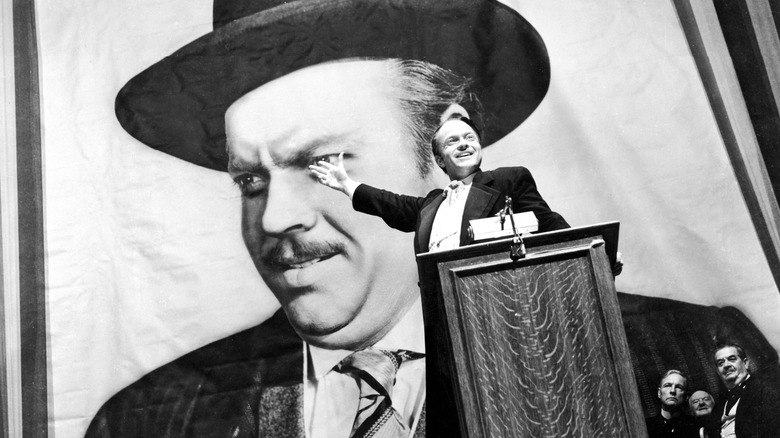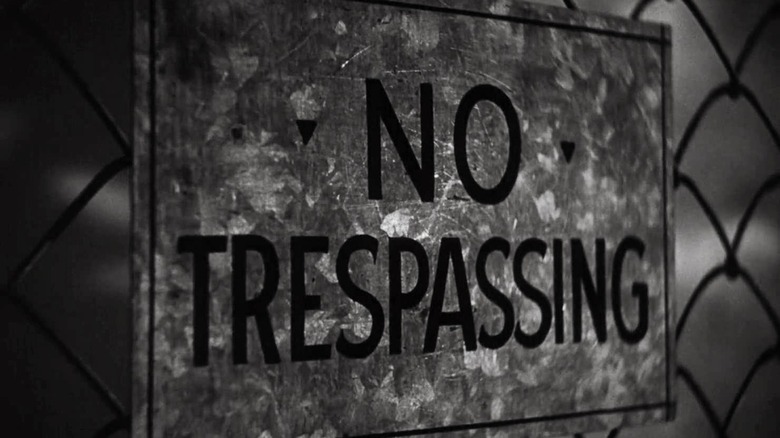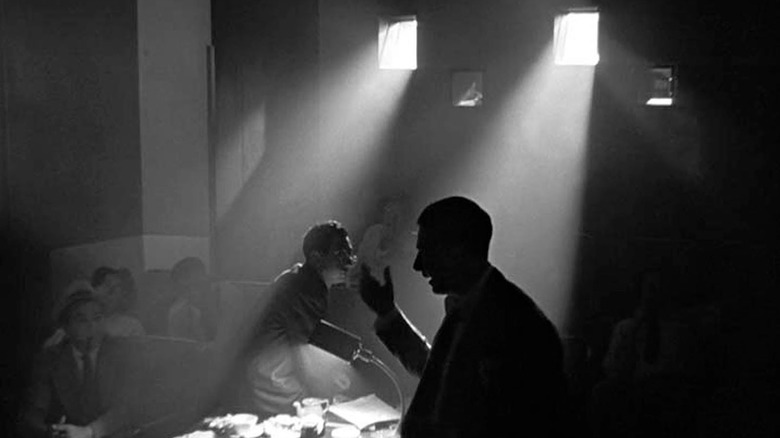Citizen Kane's Opening Scene Caused Chaos In The Theater
There's a reason why Orson Welles' "Citizen Kane" continually sits atop the American Film Institute's Top 100 Films list. The 1941 film broke nearly every established filmmaking rule while creating new techniques that are still widely utilized today.
When Hollywood came calling in 1939, Orson Welles was already an established theater and radio producer. His radio broadcast of the H.G. Wells drama "War of the Worlds" — told in news bulletin form — sent part of the northeast into a panic believing a Martian invasion was happening (creating the first "viral-media event," according to Vanity Fair). It was a testament to Welles' creativity and storytelling ability.
When Welles signed with RKO Pictures, he secured creative control over his films, allowing the inexperienced filmmaker to challenge industry norms. At age 25, Welles co-wrote, produced, directed, and starred in his first film, "Citizen Kane," a fictional biopic about a media magnate, loosely based on the life of William Randolph Hearst.
As it turns out, Welles' innovative style sent reverberations across Hollywood from the very first moments of his first film, when the opening sequence of "Citizen Kane" confused filmgoers by offering something new.
Something audiences had never seen before
In a public talk he gave in New York in 1973 (via Wellesnet), "Citizen Kane" composer Bernard Herrmann revealed that the original print of the film confused audiences. Early prints of the film, approved by Welles, had no main title card or credit sequence. It went from a few seconds of a black screen to the film's opening scene which panned up to the "No Trespassing" sign outside of Xanadu. The sequence featured no audio whatsoever. It was something audiences had never seen before, which caused some chaos. According to Herrmann:
"At the premiere, I remember people shouted, 'Lights, sound, sound, projectionist! Sound!' They could not accept a film that started in complete silence!"
The studio was unable to add sound to the film at that point, so remaining prints were sent out with the RKO trademark and a title (complete with sound), which signified to audiences that the film was beginning without issue. Even today, it feels a bit abrupt since the norm seems to be 3-5 title cards per movie (to the point where "Family Guy" satirized it).
Later, the print was edited by RKO to avoid audience confusion. Herrmann would add additional score over the opening sequence, which set the tone for the film:
Like Welles, Herrmann began his Hollywood career with "Citizen Kane" and joked during the 1973 session, "It's been a downhill run ever since." He opined that when it came to making artistic decisions, Welles was like the "Rock of Gibraltar." Indeed, Welles wasn't done with taking risks after the first sequence of the film.
He paved the way for Nolan and Tarantino
Before Tarantino and Nolan, there was Welles and "Citizen Kane." The movie has a complex non-linear narrative, and viewers must rely on six unreliable narrators to tell the story of protagonist Charles Foster Kane. Not since D.W. Griffith's "Birth of a Nation" had a film introduced such an innovative narrative structure. It would set the stage for modern films such as "Pulp Fiction" and "Memento."
Welles also challenged viewers with what they saw on the screen. He partnered with cinematographer Gregg Toland to use a rarely utilized film technique called deep focus, where every part of the screen is in focus. It is a storytelling device that emphasizes the mise-en-scène of each shot. Through careful lighting and composition, Welles conveyed information to the audience using multiple layers in every breathtaking shot.
For example, in the scene where Kane's mother transfers his guardianship, a young Kane can be seen in the background through a window, playing outside in the snow with his sled, Rosebud. It is a defining moment for Kane, the last vestige of his childhood before being torn from his family, and the scene serves as the inciting event of the film.
Using every inch of the set posed a challenge, making "Citizen Kane" one of the first movies to use ceilings. To maximize reality and to utilize low-angle shots, the production team used muslin cloths to create the appearance of ceilings, with microphones hidden behind the cloth. Until then, it was a concept foreign to Hollywood.
It is clear from the abrupt opening sequence that had audiences screaming at the projectionist that Orson Welles planned all along to challenge audiences — and all of Hollywood — with the bold risks he took in "Citizen Kane."


